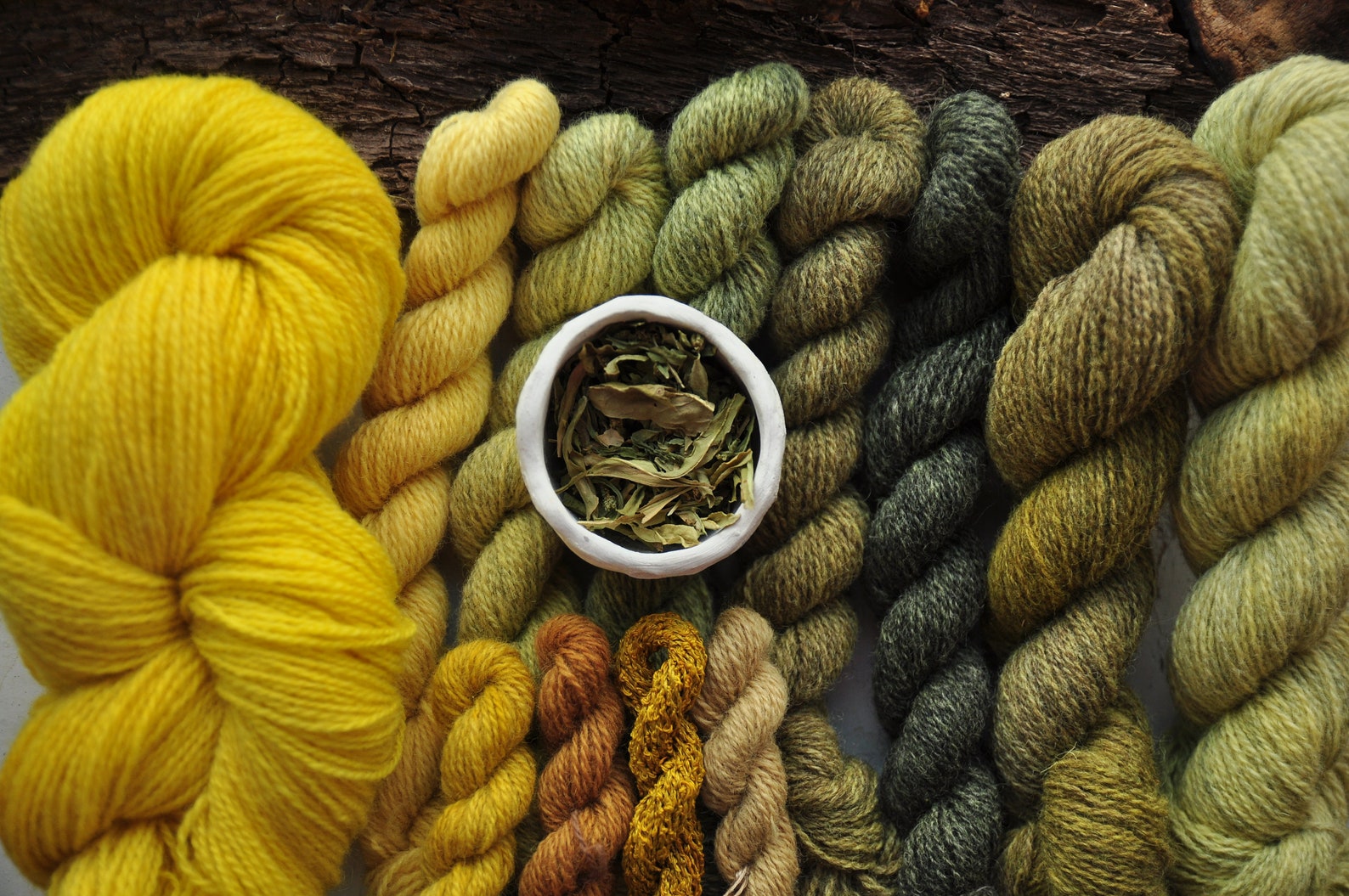

Weld
lat. Reseda luteola
€6.00
Out of stock
Weld (lat. Reseda luteola) is a very old natural dye that produces the strongest vivid yellow color. Weld is best known for its lemon yellow color, but you can also get a wide variety of gorgeous greens if you use natural grey fibers instead of the usual white. Also, this dye is very easy to use and a little goes a long way.
This particular weld is grown by my family in Lithuania and I`m very happy and proud to be able to share it with you. It is grown next to our vegetables so you can be sure that we do not use any pesticides or other chemicals.
Name: weld
Latin name: Reseda luteola
Other names: dyer`s weed, dyer`s rocket, would, yellow weed
Type: mordant dye
Part of plant used: leaves, stalks, flovers
Main colors: vivid yellow
Other colors: soft yellow, green
Main colorant: flavonoid luteolin
Purpose: natural dye for textiles and other natural materials. Can be used for making botanical inks, pastels, watercolors, printing paste, etc.
Dyeing with weld:
Use at 20-40% WOF (weight of fiber). The quantity depends on the shade you desire and the fibers you use - wool will require less dye, and thick cellulose fibers will require more dye.
Add dried weld to the dyeing pot filled with water, and stir well.
Raise the temperature to 70-80°C and simmer for 1 hour to extract the colorants. Let it cool. You may simmer longer if you wish to get dark or golden yellows.
To create a brilliant lemon yellow add a bit of alkaline, such as soda ash or chalk. Notice how the dye solution changes into a deeper yellow color. The required amount of alkaline depends on the water you use, so start with just a pinch.
Strain through a fine cloth to keep small particles out of the dye bath.
Pre-mordanted fibers should be soaked in water for at least 30 minutes before adding to the dye solution.
Immerse fibers in the weld solution and simmer for 30-60 minutes, depending on the desired shade.
After heating, let the fibers cool down in a dye pot. You can leave it overnight.
The dyed fiber can be modified with copper or iron mordants to obtain green colors. For color modification prepare a 2% copper sulfate or iron sulfate solution. Add fibers to the modification solution, keep for 5-30 minutes, and observe the results. Copper will change yellow into vivid spring or mint green and iron will switch it to darker, moss-green colors. After modifying colors, rinse in water.
After dyeing and /or modifying, hang the fibers to dry. You can leave it for several days. This process is called “air-curing” and it helps fibers to absorb more colorants.
Then wash the fibers carefully. Keep changing water until it is clear.
Additional notes:
In order to produce the most vivid emerald and grass greens, dye white fibers in blue colors with indigo or woad. Then wash fibers well, mordant with alum in, and overdye with weld.
For bright orange, mix weld with and madder dye or extract.
The easiest way to achieve greens with a weld is to use alum-mordanted natural grey fibers. Various green yarns in these photos were achieved simply by dyeing alum-mordanted grey wool.